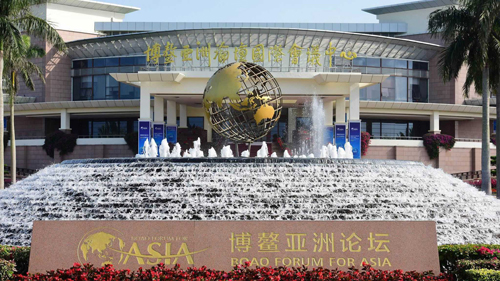Major Power Relations
Your Present Location: PROGRAMS> Major Power RelationsWang Yiwei: How could Asia secure leadership in global growth?
Source: CGTN Published: 2018-4-7

On Sunday, the annual Boao Forum for Asia (BFA) with the theme "an open and innovative Asia for a world of greater prosperity" will open in south China`s Hainan Province. Over the past two decades, the changing themes of the forum have reflected Asia`s evolving role in the world economy from a marginalized community to a helping hand and now to a growth leader.
Over the past year, Asia has delivered around 60 percent of the world’s economic growth. In 2017 alone, China contributed one third to global growth despite a slowing growth rate. Other emerging economies, notably India and Indonesia, have also contributed to this momentum.
Long-term growth at risk
But in its latest Global Economic Prospects, the World Bank questioned how long the “broad-based upturn” will last now that world economy is already “running near full capacity” and seeing a trend of slowing down in the long term despite the short-term uptick.
Asian countries are still blighted by a raft of perennial conundrums including the Korean Peninsula nuclear crisis. Moreover, new threats keep popping up. The latest irritant to the regional economy is from US President Donald Trump`s staggering tariffs on Chinese imports, stoking fears of a bitter trade war between the world’s two largest economies and ripple effects over the robust outlook of the Asia-Pacific region.
An upbeat sign amid the murky scenario is that the China–Japan–South Korea trilateral summit will likely take place in early May after a hiatus of over two years. Chinese Premier Li Keqiang and South Korean President Moon Jae-in are expected to embark on their first state visit to Japan. More ensuing economic and cultural exchanges will bring the three nations closer to building the East Asian Community together with other stakeholders.
Lack of an integrated institutional arrangement
Nonetheless, their warming relations, as well as other regional frameworks such as the Association of Southeast Asian Nations, the Shanghai Cooperation Organization, the Regional Comprehensive Economic Partnership, the renamed Comprehensive and Progressive Agreement for Trans-Pacific Partnership for TPP11, may not be sufficient in pulling Asia out of the largest predicament it’s mired in – a fragmented economic landscape. This conundrum has become increasingly magnified these past few years as the dominance of the Western world fades.
Over the past year, Trump pulled Washington out of the TPP, the Paris climate accord, UNESCO, as well as threatening to scrap the Iran nuclear deal. Meanwhile, the EU – the US’ close ally – has been beset by a slew of simmering issues like Brexit, massive influxes of immigrants and the post-crisis austerity. All these have crippled the Western leadership in making international trade rules, which has been further dented by the US-EU tariff spat more recently.
Now it`s high time for Asia to roll out an integrated institutional arrangement to make its economy more open and inclusive. It’s expected that this year`s Boao will mark a step closer toward this goal so that Asia will play a greater role in addressing the current rift and promoting global governance.
Infrastructure a prelude to community of shared future
China, a contributor to majority of global growth, can lead this endeavor given its accomplishments in technological innovation like its exploration in artificial intelligence and the Belt and Road Initiative. The subprime meltdown and the European debt crisis have left the world rather fragile to trade protectionism, while coupled with a surging wave of populist sentiment. The world economy still lacks development impetus and direction. As such, the World Bank calls on governments to improve high-quality public infrastructure as such programs have been delivering "sustained growth."
It is fair to say that China has abundant experience in infrastructure construction, perhaps deriving from a well-known idiom of the nation – "Better roads lead to better lives." Over the years, Beijing has invested massively in building railroads, expressways, bridges, and ports in both developing and developed countries along the Belt and Road including Myanmar, Sri Lanka and Singapore. In addition, Beijing has pledged 50 trillion US dollars to prop up an electricity network called Global Energy Interconnection to tackle power shortages, pollution, and climate change.
These infrastructure projects, vital to the people`s livelihood, are expected to constitute an important engine for world economic growth. And Beijing can share its wisdom for the countries in need. Sound infrastructure not only spurs regional growth but preludes a community of shared future. It’s hoped the BFA this year will foster such a community featuring an integrated institutional arrangement to lead global growth.
The article is based on an interview with Wang Yiwei, Jean Monnet chair professor, director of the Institute of International Studies, and seniro fellow of Chongyang Institute for Financial Studies, Renmin University of China.
Key Words: Boao; Asia; growth; Wang Yiwei























































































 京公网安备 11010802037854号
京公网安备 11010802037854号





